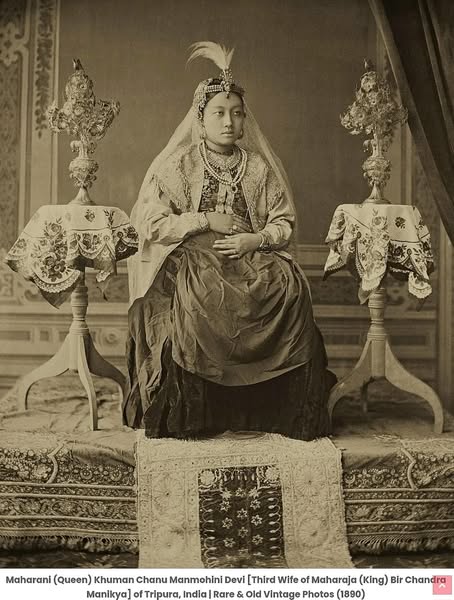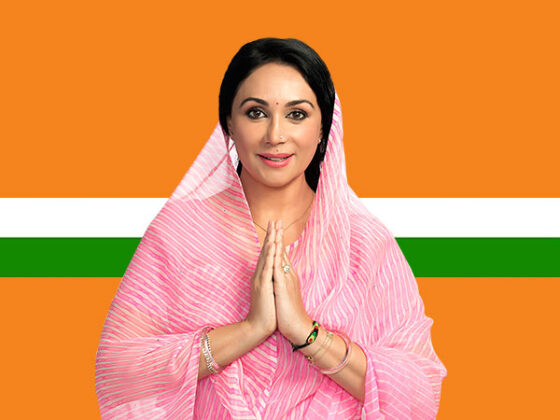Maharani Khuman Chanu Manmohini Devi: The Regal Icon

Introduction
Maharani Khuman Chanu Manmohini Devi holds a significant place in Manipuri history. Her life was a testament to resilience, wisdom, and cultural patronage. She was an influential queen whose contributions to governance, culture, and social reform left a lasting impact. This article explores her journey, achievements, and legacy, shedding light on the royal heritage of Manipur.
Early Life and Royal Lineage
Born into the prestigious Khuman dynasty, Maharani Manmohini Devi was raised in an environment of tradition and responsibility. The Khuman clan was one of the dominant ruling clans in Manipur, known for their valor and governance. Her early years were marked by a deep appreciation for Manipuri customs, literature, and administration.
She received an education befitting a royal, which included governance, diplomacy, and cultural arts. As she grew, her intellectual prowess and leadership qualities became evident, making her an ideal consort to the ruling king.
Role as Maharani
Upon her ascension as Maharani, Manmohini Devi took on the responsibility of strengthening the socio-cultural fabric of Manipur. Unlike conventional queens who remained confined to the palace, she was actively involved in decision-making and state affairs. Her influence extended to administrative matters, where she advised on policies concerning trade, education, and welfare.
She worked to uplift the position of women in Manipuri society, advocating for education and equal rights. Under her guidance, the kingdom saw reforms that promoted literacy among women, encouraging them to take on active roles in cultural and economic activities.
Patronage of Art and Culture
Maharani Manmohini Devi was a devoted patron of Manipuri art, dance, and literature. She played a crucial role in preserving and promoting Ras Lila, the classical Manipuri dance form associated with Lord Krishna. Her support ensured that this artistic tradition thrived, gaining recognition beyond the borders of Manipur.
She also encouraged the development of Manipuri literature, supporting poets, scholars, and historians. Many of the classical texts that remain today owe their survival to her efforts in documentation and preservation.
Contributions to Social Welfare
Her reign was marked by initiatives that aimed to improve the living conditions of her subjects. She championed women’s rights and launched welfare programs that provided financial assistance to underprivileged communities. She advocated for traditional handicrafts, helping local artisans sustain their livelihoods through royal patronage.
Healthcare and sanitation also saw advancements during her time. She introduced measures to improve hygiene and medical care, ensuring better health facilities for her people. These efforts solidified her reputation as a queen dedicated to the well-being of her kingdom.
Diplomatic Influence
Apart from her internal governance, Maharani Manmohini Devi played a role in diplomacy. She maintained relations with neighboring kingdoms, fostering alliances that ensured political stability. Her tactful negotiations helped in preserving Manipur’s sovereignty during turbulent times.
Her diplomatic efforts also extended to trade, as she facilitated commercial exchanges that benefited Manipuri artisans and traders. By encouraging economic ties, she ensured prosperity for her people while maintaining a balance of power with neighboring states.
Challenges and Resilience
Despite her achievements, Maharani Manmohini Devi faced numerous challenges. Political instability, external threats, and internal conflicts posed significant obstacles. However, her unwavering commitment to her kingdom and strategic decision-making enabled her to navigate these difficulties.
She was also a symbol of resilience in the face of patriarchal norms. At a time when women’s roles were often limited, she stood as a leader who defied conventions, proving that governance and intellect were not confined to gender.
Lasting Legacy
Maharani Manmohini Devi’s legacy continues to inspire generations. Her contributions to Manipuri art, culture, and society remain deeply ingrained in the region’s heritage. Institutions dedicated to the preservation of Manipuri dance, literature, and history often attribute their foundations to her patronage.
Her role in shaping a progressive and culturally rich Manipur is remembered through oral traditions and historical accounts. Festivals, artistic expressions, and literary works continue to celebrate her contributions.
Conclusion
Maharani Khuman Chanu Manmohini Devi was more than a queen—she was a visionary leader, a cultural patron, and a champion of social welfare. Her reign brought significant advancements in education, arts, and governance, leaving behind a legacy that remains integral to Manipuri history.
Her story serves as a reminder of the power of leadership, resilience, and cultural preservation. As Manipur continues to evolve, her contributions remain a guiding force in the region’s identity and pride.








